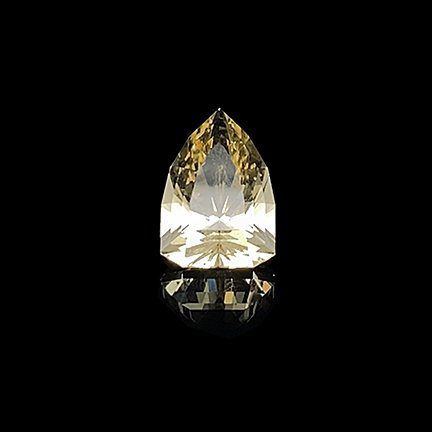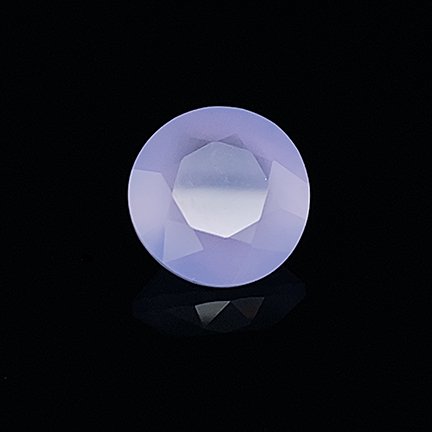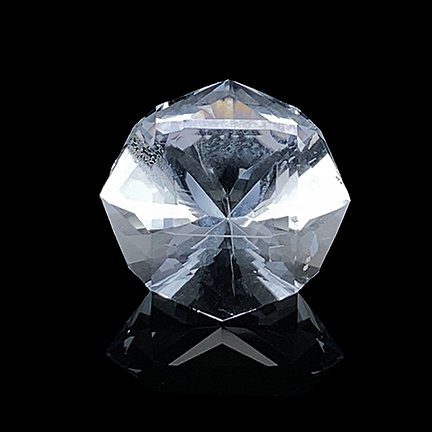Think “Multi-Purpose” Specimens - Jim Houran
By James (Jim) Houran
People with the so-called “collector gene” often indulge multiple interests and collections, either at once or over time. For instance, there are some mineral connoisseurs who likewise build important collections of art, old bottles, vintage mining equipment, Indian artifacts, pottery, or other historic or aesthetic items. Now, think about a private or museum mineral collection you really admire — for me, this includes vintage collections such as the American Museum of Natural History, Chicago’s Field Museum, and the Smithsonian, as well as modern collectors who exhibit broadly to the community such as Carolyn Manchester, Bill Larson, Gail and Jim Spann, and Salim Edde (MIM Museum) — and most likely that collection can be divided into several sub-sets or mini-collections, either by species, crystal class, locality, or other meaningful criteria. This is part of the allure of gem and mineral collecting… individual specimens and entire collections typically have more than one story to tell.

4.14 ct; 12.74 mm x 8.84 mm
On this point, dealers and auction houses frequently use the term “crossover collectible” to describe an item with a diverse character that makes it appealing to multiple groups of collectors. Pieces with strong crossover appeal often garner greater interest and price, since they are desired by multiple interest groups. For example, antique Coca-Cola items bring high dollars because they are simultaneously in demand by collectors of (a) Coca-Cola memorabilia, (b) Americana, (c) antiques, and (d) classic advertising material. Similarly, a top-quality crystal of New Jersey zincite with a handwritten label from a historic collection or dealer would be a “Holy Grail” target for collectors seeking either East Coast classics, rare minerals, gem crystals, material from the Franklin locality, or specimens with special provenance.
However, the more common notion of “crossover” in the auction-world is less compelling to me than the idea of “multi-purpose” specimens and collections That is, pieces or assemblies that are important and hence desirable because they perform different functions. This suggestion might sound eccentric, but in a very real sense, gem and mineral specimens can provide key services for collectors and the general public. Stated more poetically, to my way of thinking they are actors in four basic types of scripted productions:
- Conservation: Some species (or varieties) are rare in nature or at certain localities. For this reason alone, fine examples should be preserved for posterity as historical and geological artifacts.
- Research-documentation: Fine specimens are immensely useful for research purposes, as they show the pinnacle of development for either a given species (or variety) or that species at a particular location. These pieces are geological record keepers.
- Education-display: Following the point above, some specimens have unusually fine features that serve as “textbook” examples of crystal classes, colors, or other key features. Accordingly, these well-developed qualities exude a sense of “showmanship” and make effective display items for general education and display projects.
- Aesthetics-adornment: Frankly, the allure of most specimens is the psychological experience they give people. Some even refer to it as an “energy,” albeit not the “crystal healing” type. Gems and minerals are visually and intellectually attractive products of nature. Their allure invites us to learn more about them, so the enjoyment associated with pure aesthetics can be considered the “gateway drug” to more academic purchases, which involves the broader principles of connoisseurship as discussed by many authors (e.g., Currier, 2008, 2009a, 2009b; Halpern, 2005; Houran & Bleess, 2014; Smale, 2006; Thompson, 2007; Wilson, 1990).

5.90 ct; 12.11 mm
My approach both to collecting and exhibiting has generally focused on specimens that speak to most, if not all, of these four “multi-purpose” elements. Admittedly, it takes discernment and discipline to adhere to these criteria with every acquisition or when selecting specimens to exhibit. This means that collectors can still be flexible without requiring these parameters for every acquisition. That said, faithfully putting into practice this “multi-purpose” outlook has added new intellectual and emotional dimensions to my personal experience and evaluation of gem and mineral specimens.
Perhaps this approach will also make sense to readers as a way to inform or guide their collection goals. Collectors certainly pursue different things for different reasons, and our very motivations for collecting in the first place vary by individual. But my belief is that ultimately all collectors are drawn to specific specimens for the stories they tell — and all exhibitors are enthusiastic to share those stories with others. Put simply, for me the most desirable specimens are those that are talented actors who can play more than one part and star in more than one story. “Multi-purpose” equals “multi-engaging.”

16.36 ct; 16.63 mm
References
Currier, R. (2008). About mineral collecting: Part 1 of 5. Mineralogical Record, 39, 305-313.
Currier, R. (2009a). About mineral collecting: Part 3 of 5. Mineralogical Record, 40, 49-59.
Currier, R. (2009b). About mineral collecting: Part 5 of 5. Mineralogical Record, 40, 193-202.
Halpern, J. (2005). Criteria for selecting crystallized mineral specimens for a display collection. Mineralogical Record, 36, 195-198.
Houran, J., & Bleess, J. (2014). Thumbnail collecting: One philosophy of collecting. Lapis, 39, 12-28. [see also: https://www.irocks.com/little-wonders-connoisseur-thumbnails-in-the-contemporary-collector-market]
Smale, S. (2006). The Smale Collection: Beauty in Natural Crystals. Lithographie, LLC: Denver.
Thompson, W. (2007) Ikons: Classic and Contemporary Masterpieces. Supplement to the Mineralogical Record. Tucson, AZ: Mineralogical Record.
Wilson, W. E. (1990). Connoisseurship in minerals. Mineralogical Record, 21, 7-12.
We’d like to extend a special thanks to friend and fellow mineral enthusiast, Jim Houran, for authoring the reprinting of this article.
“Dr. Jim” Houran, Ph.D., Managing Director of AETHOS Consulting Group, is a 25-year veteran in applied psychological research and a published expert on peak performance, online testing and interpersonal and organizational compatibility. He has authored over 150 articles, and his award-winning work has been profiled by a myriad of media outlets and programs including the Discovery Channel, A&E, BBC, National Geographic, NBC’s Today Show, USA Today, New Scientist, Psychology Today and Forbes.com. He serves as adjunct faculty at the Laboratory for Statistics and Computation, ISLA – Instituto Politécnico de Gestão e Tecnologia (Lisbon, Portugal), an editorial board member for the APA peer-reviewed journal, Psychology of Consciousness: Theory, Research and Practice, and as an editorial board member for the peer-reviewed journal, Cornell Hospitality Quarterly.
“Many people over the years have told me that I’m best described as an unconventional researcher and practitioner who’s clearly passionate about bringing real-world psychology to the everyday personal and professional lives of clients. This is possible because of my eclectic and generalist background in the social sciences, which gives me a comprehensive perspective about imagination, cognition, personality and behavior. For me, nothing compares to the satisfaction of working on projects in which the latest psychological theories help to produce unprecedented awareness and positive outcomes. The fluid and demanding industry of hospitality is ultimately built on people and relationships. Psychology has so much to say about the drivers of professional development, team dynamics, organizational performance and the guest experience. I’m in my element when consulting with leaders and their teams on these strategic issues. But psychology doesn’t define my entire identity; I stay personally grounded through my family and enjoying the natural sciences, history, anthropology and the arts. It’s fun and rewarding being unconventional!”